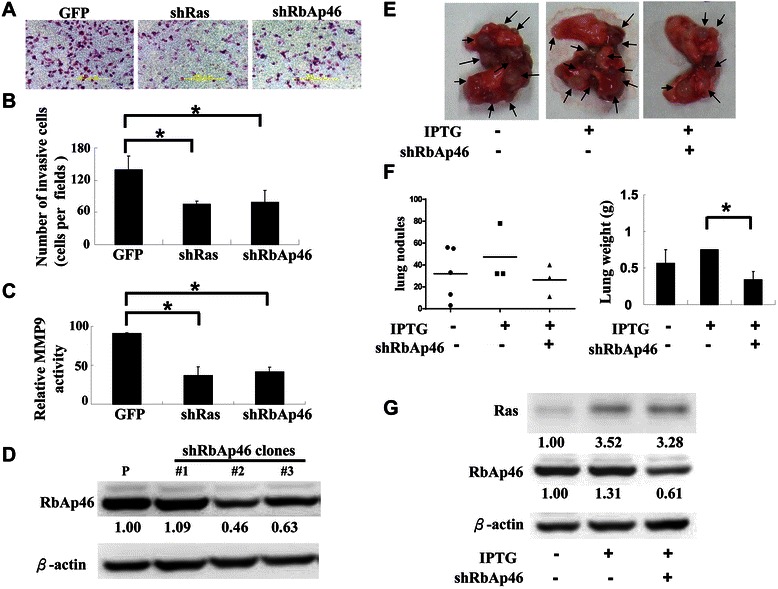Figure 4.

Silencing Ras or RbAp46 expression decreases invasive activity and lung metastasis of the bladder cancer T24 cells in nude mice. (A) T24 cells treated with shRNA of Ras, RbAp46 or GFP lentivirus for 24 hr were seeded into matrigel-coated Transwell™ wells. Medium containing 10% FBS was used as chemoattractant. The cells were incubated for 18 hr and the invasive cells were stained, photographed and counted. (B) The quantification of invading cells was shown as mean ± S.D. of 9 samples from 3 independent experiments. Student’s t test was used, *p < 0.05. (C) T24 cells were treated with shRNA of Ras, RbAp46 or GFP lentivirus for 24 hr. The supernatants were centrifuged and collected. MMP-9 activity was measured using the SensoLyte® 520 MMP-9 assay kit. Data represent the results as mean ± S.D. of three independent experiments. Student’s t test was used, *p < 0.05. (D) The 7–4 cells were infected with different RbAp46 shRNA lentiviral clones. The clones with significant silencing of RbAp46 were selected. The protein expression was evaluated by Western blotting using specific antibodies. P: parental cells. (E) The 8-week-old male BALB/c nude mice were injected intravenously with 7-4-shRbAp46 (#2) cells (3×105) through the tail vein. Mice were sacrificed three weeks later and the lungs were collected, weighted and photographed. Arrows indicate lung nodules. (F) The lung weight and the number of lung nodules from E were quantified. (G) The lung proteins of those mice were extracted and expression levels of Ras and RbAp46 of five mice in each group were detected by Western blotting. Each lane represented a group of mice. *indicates statistical significance at p < 0.05 by Student’s t test analysis.
